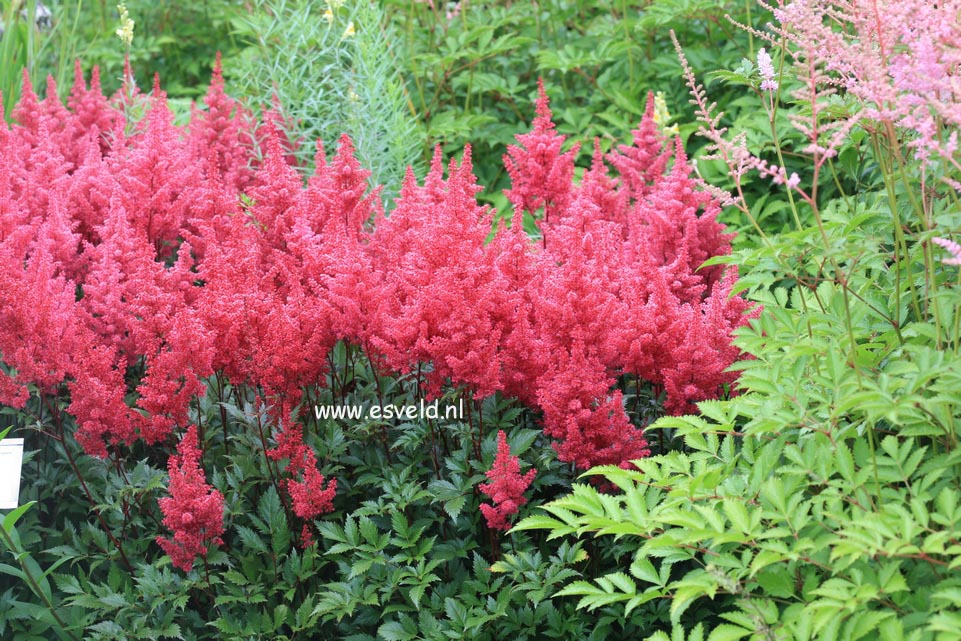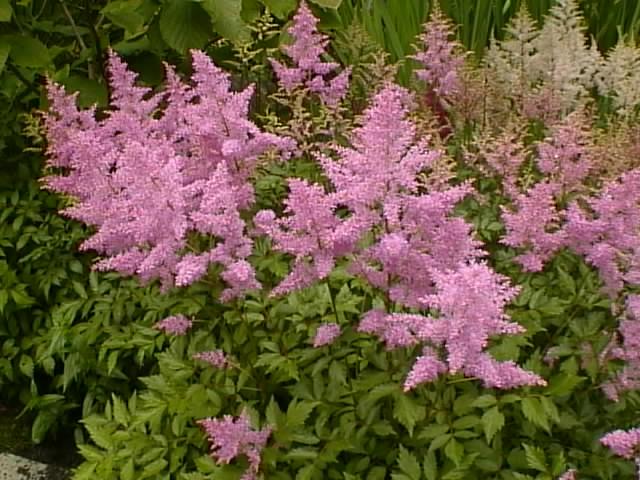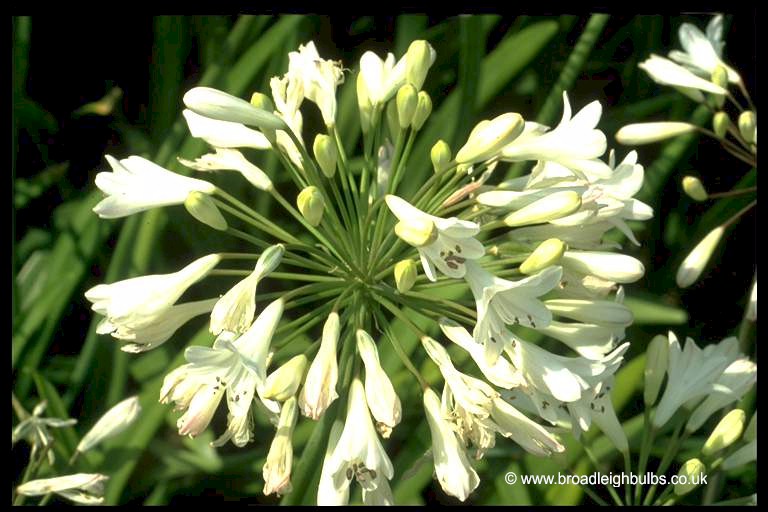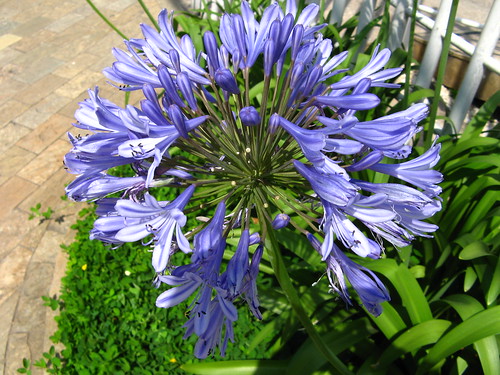The astilbe's crown has a woody appearance. Plant Fanal crowns at ground level about 8 to 12 inches apart. Soil should be rich, fertile, moist, and well drained. The Fanal's roots are shallow and its crown will become exposed over time. When this occurs, crowns may be covered with soil and compost or divided and replanted.
Astilbes thrive when they are well watered and frequently mulched. Fanals can dry out quickly, but when well maintained will happily tolerate a few hours of morning sun. If not divided when their crowns reappear, astilbes should be divided every three or four years to keep them strong and blooming. Astilbes actually grow better from this division rather than seeds.In the original Greek, astilbe means without brilliance, an ironic name for such a dazzling plant. Take advantage of Astilbe Fanal's beauty by planting it as an accent piece along shaded garden borders and next to pulmonaria, hosta, and bergenia. Even on its own, the contrast between the Fanal's garnet red blooms and lacy bronze-green foliage is very fetching.
 Astilbe Arendsii
Astilbe Arendsii Astilbe Arendsii
Astilbe Arendsii Astilbe Arendsii
Astilbe Arendsii Astilbe Arendsii
Astilbe Arendsii Astilbe Arendsii
Astilbe Arendsii Astilbe Arendsii
Astilbe Arendsii Astilbe Arendsii
Astilbe Arendsii
 Red Astilbe
Red Astilbe Red Astilbe
Red Astilbe Red Astilbe
Red Astilbe Red Astilbe
Red Astilbe Red Astilbe
Red Astilbe Red Astilbe
Red Astilbe Red Astilbe
Red Astilbe Astilbe White
Astilbe White Astilbe White
Astilbe White Astilbe White
Astilbe White Astilbe White
Astilbe White Astilbe White
Astilbe White Astilbe White
Astilbe White Astilbe White
Astilbe White Astilbe
Astilbe Astilbe
Astilbe Astilbe
Astilbe Astilbe
Astilbe Astilbe
Astilbe Astilbe
Astilbe Astilbe
Astilbe Agapanthus Praecox
Agapanthus Praecox Agapanthus Praecox
Agapanthus Praecox Agapanthus Praecox
Agapanthus Praecox Agapanthus Praecox
Agapanthus Praecox Agapanthus Praecox
Agapanthus Praecox Agapanthus Praecox
Agapanthus Praecox Agapanthus Praecox
Agapanthus Praecox White Agapanthus
White Agapanthus White Agapanthus
White Agapanthus White Agapanthus
White Agapanthus White Agapanthus
White Agapanthus White Agapanthus
White Agapanthus White Agapanthus
White Agapanthus Agapanthus Africanus
Agapanthus Africanus Agapanthus Africanus
Agapanthus Africanus Agapanthus Africanus
Agapanthus Africanus Agapanthus Africanus
Agapanthus Africanus Agapanthus Africanus
Agapanthus Africanus Agapanthus Africanus
Agapanthus Africanus Agapanthus
Agapanthus Agapanthus
Agapanthus Agapanthus
Agapanthus Agapanthus
Agapanthus Agapanthus
Agapanthus Agapanthus
Agapanthus